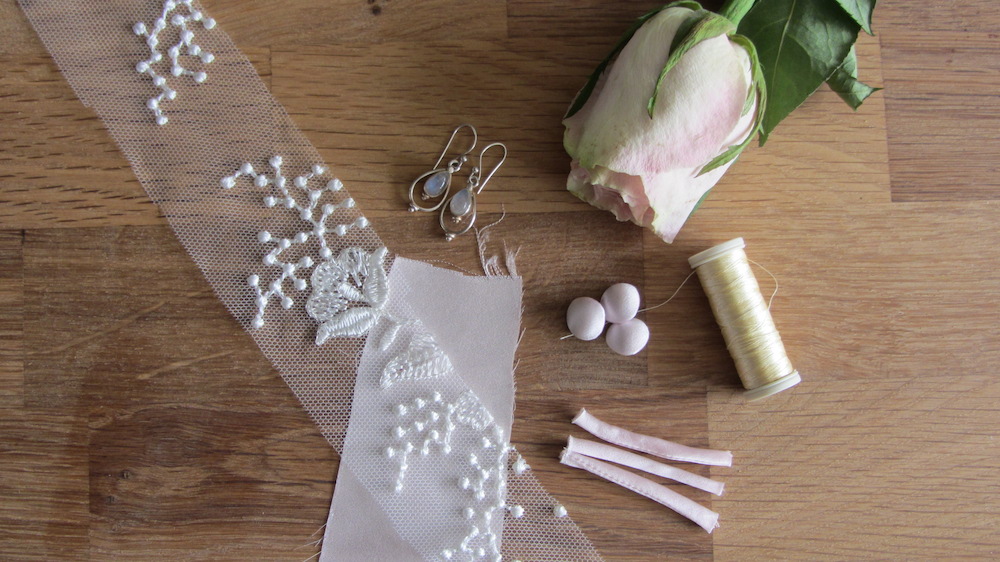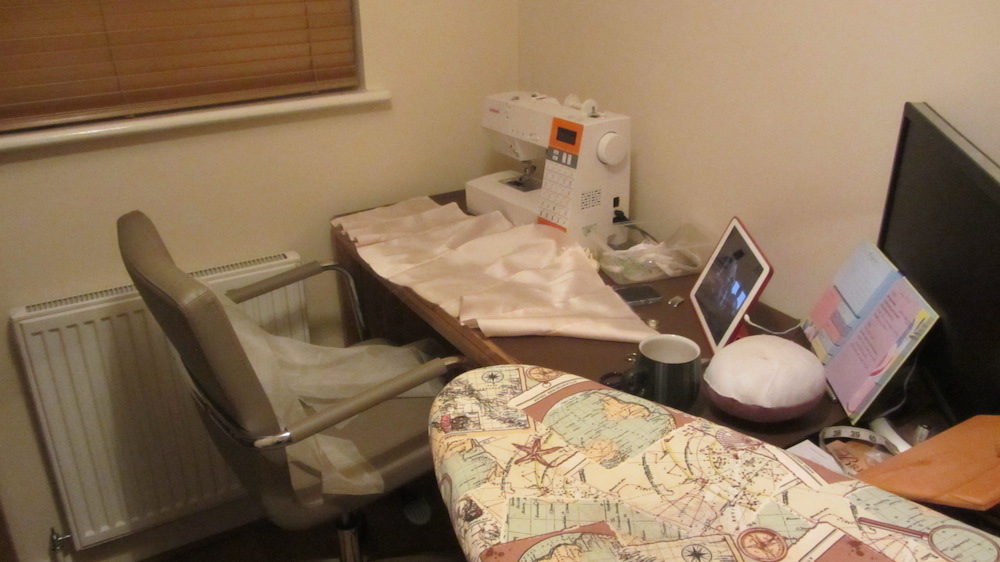You’re making your wedding dress, right?
You may have noticed that things have been a little quiet in this corner for a few months. There is a very good reason for this - Adam and I got married in early May!
The day was just wonderful - the best day I have ever had. Our family and friends were good enough to join us in Derby so Adam's grandpa could be there. We booked the fabulous West Mill as our venue and it couldn't have been more perfect or more fitting as it is a converted cotton spinning mill! Some of the floors are appropriately named - you get married in the Cotton Quarter and party the night away in the Spinning Room. It truly is a magical place.
I hope you don't mind me indulging in a few posts about this day and its handmade elements. I'll start with my wedding dress as the professional photos are almost ready so it shouldn't be too long before the big reveal! Today I want to discuss the one question which follow the congratulations for any sewer - "will you make your wedding dress?"
I thought it might be interesting, and hopefully helpful to those considering this question, to share some of the factors in my decision to make mine and some useful resources and tips I picked up along the way. We'll get to the actual details of the dress in the next post.
The entrance to The West Mill
Pause at the beginning
It is a tough decision to make at a time when you are making hundreds. Organising a wedding of any size is a big undertaking and when you add in the dress making process, it has the potential to become completely overwhelming. I can get so excited that I can make creative decisions without really thinking about them in detail. So while I knew, very deep down, that I would ultimately be making the dress, I forced myself to pause for a couple of weeks. I used the time to carefully think it through, to research and to read about other people’s experiences and ensure this was the correct decision for me.
Time
Without doubt, this was the biggest factor for me to consider. We’ve all been there when a project that is taking longer than anticipated. A wedding dress is one of those projects. You need to give yourself as much time as you possibly can especially as you’ll need to build in time for research, receiving samples, fitting, and practising techniques with your selected fabrics. I’d really recommend giving yourself that extra month or two – essential if you have the Christmas break in the middle or you’re considering extensive amounts of hand stitching.
I had eight months from booking the venue to saying “I do” and I was seriously concerned that this would be too short a time. I didn’t want to be putting the finishing touches to the dress the week before the wedding. So I set a deadline and worked backwards. I started the dress at the beginning of November and finished towards the end of March. If I had my time over, I’d have started at the beginning of October as I felt the pressure a little towards the end.
This next tip may sound obvious but it is something that I forgot at times during the winter months. Set your sewing time to allow you to enjoy this process. Build in enough time for short breaks to allow working in chunks and step away when it is becoming a little much. I found my full day sessions were much more productive and enjoyable when I paused fairly frequently. I also avoided late night sessions and doing too much when I was tired as this is not when I do my best work.
Potential stress
This is also worth taking the time to think about and it was one area that Adam asked me to consider. He was worried about the additional complexity and to do lists and therefore potential stress that this undertaking might bring on top of organising a major event and balancing a prolonged busy period at work. What would happen if it all got too much and mistakes were being made? How would I deal with that? I had locked him out of the process as I didn’t want him to know anything until the day. My answer - a sewing support network.
Support network
Adam had raised a very fair point. If it all got too much, he would be on the front line but without the details and the ability to help. I filled this gap with a few close sewing friends who were only too happy to answer questions, act as a sounding board, or calm me down over whatsapp. I’d recommend having at least one other person who understands the craft that you can turn to for help and support.
While Hannah, Leire and Kelly did a magnificent job, I decided to take this one step further and ask a professional to act as a partner/consultant. I’m extremely fortunate to know Chris Eady, a local freelance designer and pattern cutter. I met her a few years ago when I took one of her pattern cutting courses and stayed in touch. Chris is a wonderful, patient, extremely generous and talented woman and I knew she would be able to guide me through the process when I got stuck, point out techniques I hadn’t considered, and hold me to a high standard! It’s not an understatement to say that she is one of the biggest influences on my stitching – my makes dramatically improved after meeting her and it only seemed natural to bring her on board. Going down this route won’t be an option for everyone, nor is it something what you might want to do, but it worked so well for me and it’s only right to give Chris the recognition she deserves in this story.
Space
This was an interesting issue and one I didn’t think about until I had started. I don’t have a dedicated sewing room and as I had decided that I didn’t want Adam to see the dress before the day I needed to be creative. I ended up working mostly in our study and banning Adam from going in there. While I managed fairly well, it wasn’t ideal as the room is small and quite cramped. If you can, use an area that is spacious and is somewhere you can leave set up to continue working. Cutting out at home was impossible so I hired a room in a community centre for a couple of hours.
My rather cramped sewing conditions for the dress. Although it is amazing what you can make in such a small space!
Also make sure that the space is easy to keep clean and tidy – you don’t want to find your snips or your cup of coffee perilously close to your fabric (slightly ashamed to say this happened with alarming frequency).
Resources
There are many sewers out there who have been down this path with amazing results and have generously shared their experiences. Here are a few that I found particularly helpful:
Sally at Charity Shop Chic
Melanie at Poppykettle
Melissa at Fehr Trade
Ree at Ree Sewn
Books:
Bridal Couture by Susan Khalje. This really is the couture wedding dress bible of its reputation. I found it particularly helpful to understand fabrics (especially lace) and handle them and how to construct the dress. As you'll see from future posts, I didn't add a corselette but the content of this book was super helpful as well as incredibly interesting.
Couture Sewing Techniques by Claire Shaeffer. The perfect companion to achieving a high quality finish. I used this book in a hand holding exercise, even on techniques I knew well!




